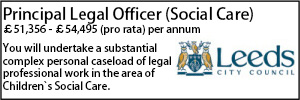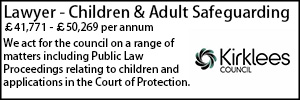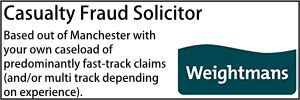Cost of settling clinical negligence claims “more than tripled” in last two decades: National Audit Office
- Details
The annual cost of settling clinical negligence claims has more than tripled over the past two decades, from £1.1 billion in 2006-07 to £3.6 billion in 2024-25 due to “increased claim numbers and the rising costs of settlements”, according to a report from the National Audit Office (NAO).
Published today (17 October), the report advises that “more can be done” to manage cost pressures, including building on the use of analytics, and the Department for Health and Social Care “reviewing the approach to claims in cases where the legal costs exceed the amount of compensation”.
NHS Resolution is responsible for handling clinical negligence claims against the NHS in England. The Department of Health and Social Care (DHSC) oversees NHS Resolution and develops policy to manage the costs of clinical negligence cases.
According to the report, between 2006-07 and 2016-17, the number of settled clinical negligence cases more than doubled, from 5,625 to 11,397.
The NAO observed: “Since 2016-17, increases in costs are due to rising amounts of compensation paid out on claims. This is primarily due to a small number of very high-value claims.
“Reasons for increased compensation include advancements in medicine and treatments, and people needing more care as they live for longer.”
The report found that damages on very-high value cases (with awards of £1m or more) accounted for 68% of all costs in 2024-25, despite only constituting 2% of claims by volume.
Meanwhile, the legal costs for low-value claims (for awards of £25,000 or less) were 3.7 times higher than the damages awarded to claimants in 2024-25.
The NAO said: “Low-value claims currently make up three quarters of all claims. Plans were made by the previous government to cap the legal costs in low-value cases, but these have not been implemented following the change of government in 2024.”
It continued: “There is also a risk that government may be paying twice in some cases: first by settling a claim, and then again by paying for further treatment as patients could go on to use publicly funded health or social care services, despite the settlement being paid with the assumption that they will use the private sector.”
NHS Resolution and the Government Actuary’s Department estimate that the cost of clinical negligence cases will continue to increase each year, with annual payments potentially reaching £4.1 billion by 2029-30.
In the report, the NAO recommended the following steps to help DHSC and NHS Resolution manage future risk:
- build on NHS Resolution’s existing use of analytics and AI to help provide a more comprehensive analysis of damages awarded
- consider whether the current approach to legal costs remains proportional given the high relative costs of low-value claims
- explore possibilities for greater transparency on the fees agreed between claimants and their lawyers
- assess whether the requirement to calculate damages based on privately funded care packages remains aligned with DHSC’s vision of a modern NHS
- consider incorporating performance against complaints standards into future inspection and oversight regimes as patients report finding the current processes confusing and frustrating.
Gareth Davies, head of the NAO, said: “Despite progress in containing the number of clinical negligence claims in some specialties, the increasing cost of the small number of very high value claims is driving higher costs for taxpayers.
“Reducing harm to patients is clearly the best way of containing this cost. Alongside this, DHSC should consider whether the existing approach to legal costs remains proportionate for all claims, including whether alternative methods to compensate for negligent treatment could provide better outcomes for patients, with less cost overall.”
A Department of Health and Social Care spokesperson said: “There has been an unacceptable rise in the cost of clinical negligence claims – billions that should have been spent on front line services.
“From overhauling our broken safety landscape, to grasping the serious problems in maternity care – this government is grabbing hold of this problem and taking the decisive action patients and taxpayers deserve.
“Our 10-year health plan makes clear that patient safety is the bedrock of a healthy NHS and we are working to ensure we reduce the incidents that lead to claims.
“However, a large portion of these costs occur through the legal system and we have appointed legal expert David Lock KC to advise us on how to address rising legal costs and how we can improve the claims process for patients.”
Lottie Winson





























